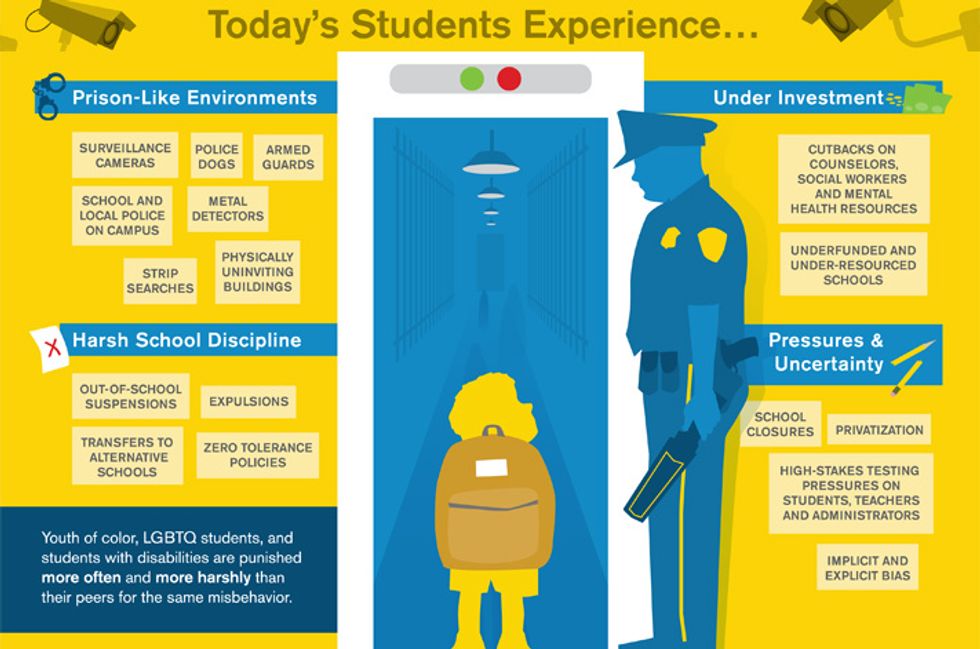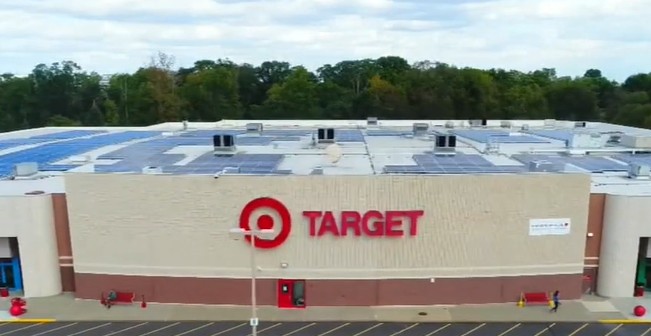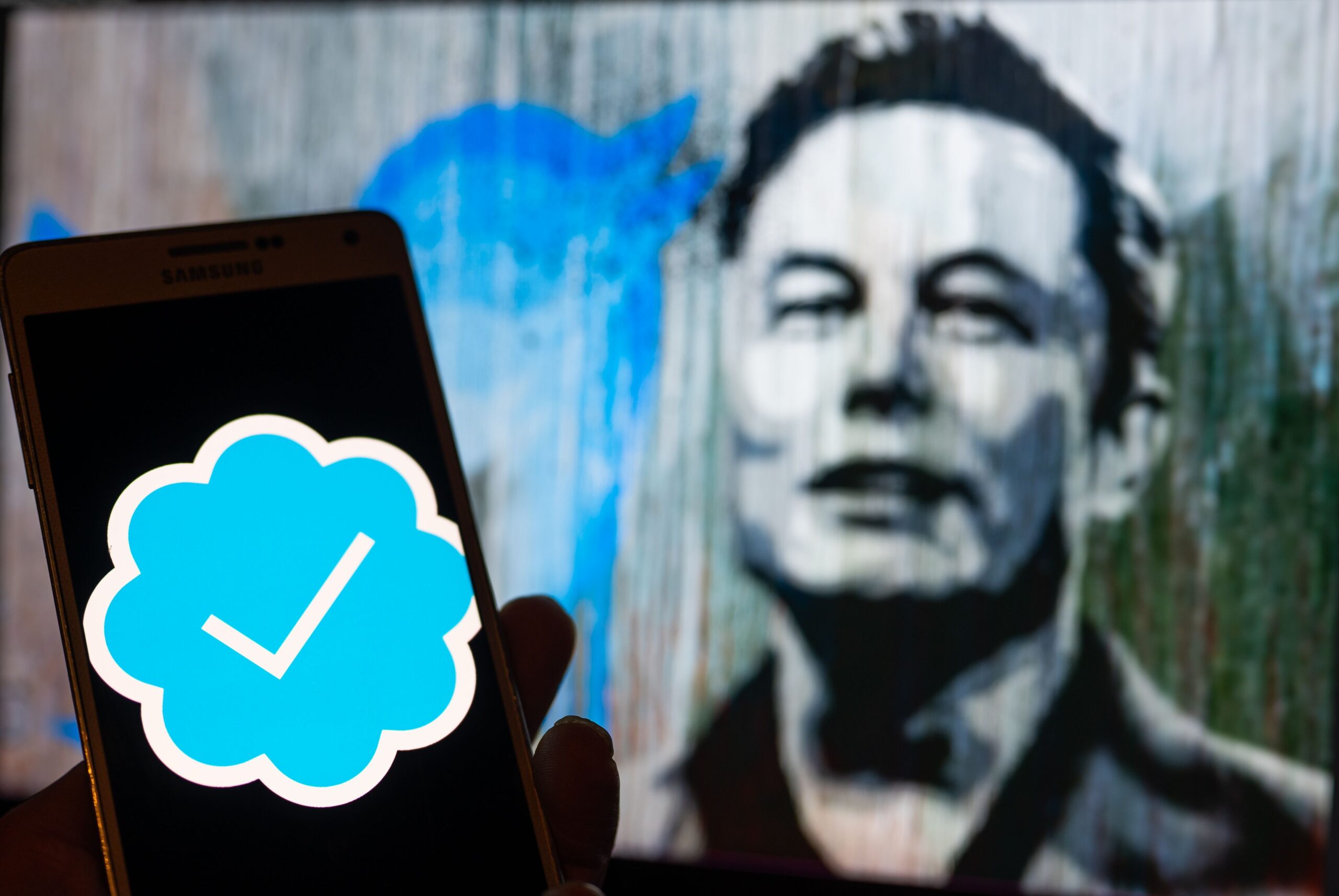Since the killing of George Floyd, a massive wave of anti-police and pro-Black lives protests have erupted in America and across the world.
Many of these protests focus on the fact that police don’t tend to keep Americans safer. Specifically, they pose threats to Black Americans, and this problem pervades every aspect of society, from courtrooms to prisons to schools.
Over the past few months, students (Black and brown students, in particular) have zeroed in on an effort to remove police from schools. Across the nation, student protestors have taken the fate of their schools and peers into their own hands, launching increasingly intense protests in efforts to remove police from their educational institutions.
A Legacy of Violence: The Problems with Policing in Schools
The roots of these protests stretch deep. The first police officers to appear in schools were part of a program pioneered in the 1950s that saw “school resource officers” (SROs) hired.
“Called a living symbol of law and order by some at the time, the presence of police in schools represented a larger, national tide of clarion calls to solder steel fangs onto America’s criminal justice system,” writes Alexander Zhang for Slate. But immediately there was pushback. “Students, some critics worried, might be coerced into self-incrimination and service as informants on their friends and families,” Zhang continues.
Still, as late as 1975, only one percent of schools employed police officers. By the late 1990s, after the War on Drugs and other racist efforts targeted specifically poor, black and Latinx communities, the majority of urban schools began to employ cops—and today two-thirds of students attend school with police, and NYC alone employs more police officers than counselors.

The modern movement to defund and remove police from schools has been in progress for years, and many dedicated student activists have spent countless hours fighting for safer police-free schools.
“It’s millions of dollars spent on police,” said Denilson Garibo, a senior at Oakland High School. “We’re having assistant principals being cut [from] our schools. Our teachers are not getting enough money for what they do. Why are we prioritizing school police over our education?” Garibo has been fighting police for over two years, attending school board meetings and speaking about the dangers that police officers pose to Black students.
It’s not hard to see where these student protestors’ anger comes from. Police—an often violent, undertrained force endowed with weapons and the power to lock people up—and underserved schools full of vulnerable, impressionable kids make an inherently ugly mix.
“When you have police in schools, you have a culture clash,” said Judith Browne Dianis, executive director of the Advancement Project National Office. “And that culture clash is that their job is to protect people but also they enforce the criminal code, and they were enforcing criminal code on regular teen behavior.”
The School-to-Prison Pipeline: A System Targeting Students of Color
The data reveals that these crackdowns disproportionately affect communities of color, making police in schools a racial justice issue.
“During the 2015-2016 school year, Black students accounted for 15% of total enrollment but 31% of students referred to law enforcement or arrested,” a report by the Civil Rights Data Collection the U.S. Department of Education’s Office for Civil Rights found.
Black students are, in essence, arrested at double the rate of their white counterparts. Why? Schools that have larger Black and Latinx populations are more likely to have larger police presence, automatically raising these students’ chances of being arrested. “Students of color are also more likely to be enrolled in a school with an officer. While 42% of U.S. high schools in the 2013-2014 school year had officers, 51% of high schools with large Black and Latino populations had them,” writes Astrid Galvan for wgme.com.
Schools comprised of largely poor, Black, and Latino populations are more likely to be plagued by the school-to-prison pipeline, a structure that filters students to prisons just like some schools filter (typically whiter, wealthier) students towards colleges.
This pipeline exists in part thanks to the disproportionately large police presence in schools that are part of underserved communities, and the dearth of community resources available to these schools.
The school-to-prison pipeline is “part of a national trend that criminalizes rather than educates students — and one that disproportionately targets black students — as “tough-on-crime” policy has resulted in millions of mostly black and brown people winding up behind bars,” notes Mariame Kaba in Teen Vogue, adding that “nationally, since 1990, spending on prisons has increased three times as quickly as spending on education.”
Police employed in schools are likely to target undocumented children and families, to arrest children for petty crimes that wealthier, whiter children are far more likely to get away with, and to criminalize people based on racist ideas baked into the framework of policing since its inception.

“The presence of police in schools, I believe, is fueled by a dehumanization of children of color, which suggests that there needs to be a constant surveillance of these children in schools,” writes author Monique Morris.
The data is there every step of the way to support all this. According to NPR, “Data show that schools with cops are more likely to refer children to law enforcement, including for non-serious violent behaviors. In 43 states and the District of Columbia, Black students are more likely to be arrested than other students while at school, according to an analysis by the Education Week Research Center.”
These studies stand for themselves, but they don’t reveal the truly harmful and traumatizing effects that police in schools can have on individual students of color. Over the past few years, police have been filmed performing atrocious acts of violence towards students, revealing a deeper pattern and implying a much longer and more terrifying history of police committing crimes against the students they’re assigned to protect.
In the fall of 2019, an officer was caught handcuffing a sobbing 6-year-old girl. In another school, an officer was filmed shoving an 11-year-old student against a wall. Both students were Black.
This is not a new phenomenon. In 2015, a video of a police officer throwing a 16-year-old Black girl across a room sparked outrage. The student who filmed the video received a misdemeanor charge and a suspension.
So if there are so many issues with police in schools, why are they there at all?
“There isn’t much evidence indicating that police officers in schools make schools safer,” says Dominique Parris of the research organization Child Trends. “What they do do is increase the likelihood that Black and brown children are going to be involved in the legal system early and often.”
In America, there is a pervasive cultural myth—often most prevalent among white, powerful groups—that teaches us to associate police with safety. Police presence increased in schools in the wake of early school shootings in the 1990s, but a 2018 Washington Post analysis of over 200 incidents of gun violence found that police were only successfully able to intervene twice in armed shooter situations.
On the other hand, restorative justice programs that focus on relationships between students and the people there to protect them are far more likely to stop shootings and reduce violence in general. Behavioral assistance programs based on relationships between students and counselors help prevent students from lashing out and can also help students identify unstable or potentially dangerous peers.
Visions of a Police-Free Future
Slowly, protests are working. The Minneapolis Public School board voted this year to end its contract with the Minneapolis Police Department after a number of protests. Still, other schools have resisted students’ efforts to remove police officers.
Protestors don’t plan on giving up, and they don’t plan on being satisfied with only removing cops. Protestors who want the police out of schools don’t simply want the police gone—and they know removing the police is not a solution to every problem.
Instead, protestors want the funds used to pay salaries of cops redistributed, specifically towards counselors, nurses, and other resources that might help students succeed rather than relegating them to prisons.
These programs are appealing alternatives to funneling students off to deeply traumatizing and damaging prison systems, which can haunt people well into adulthood, destroying families in the process. Protestors are asking schools to imagine a world in which funds used to police and punish students could be used to provide educational programs, health and wellness resources, psychological health, and social work avenues.
They’re asking, in short, for schools to do what they’re supposed to do: help students learn.





